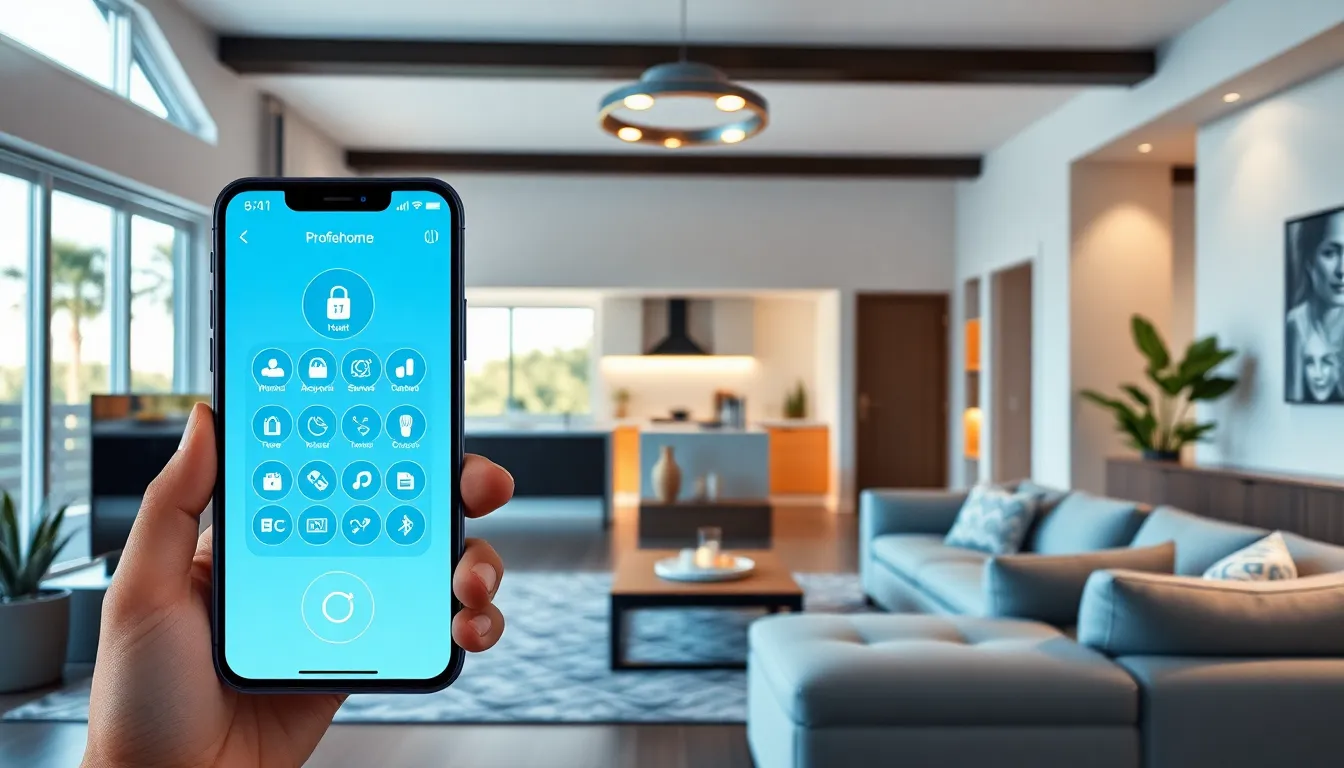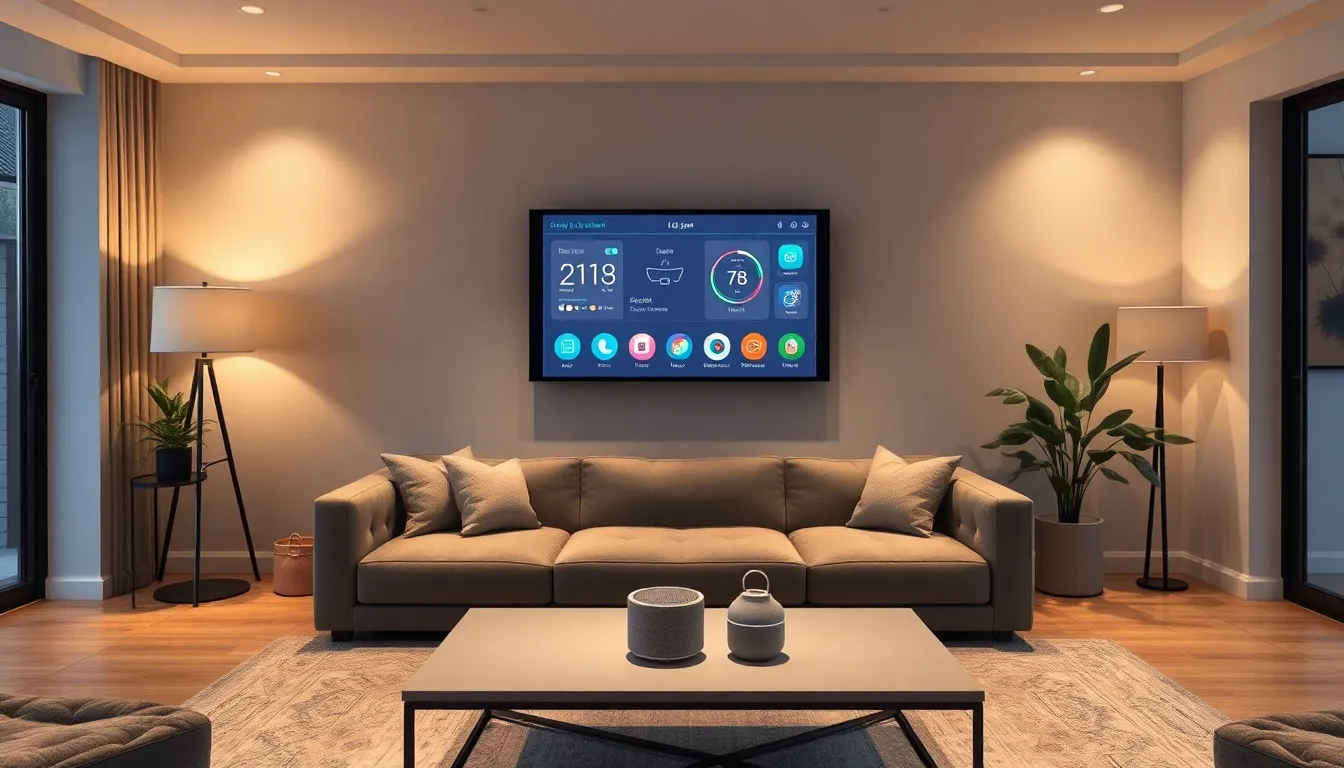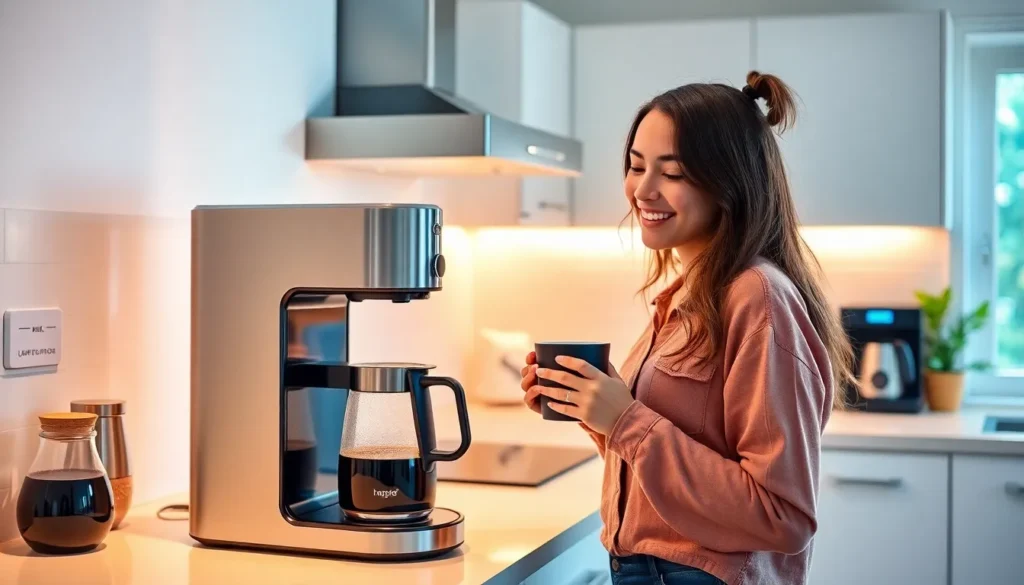Imagine walking into your home and having the lights dim, the thermostat adjust, and your favorite playlist start playing—all without lifting a finger. Sounds like magic, right? Welcome to the world of home automation kits, where technology meets convenience in a way that even your pet goldfish would appreciate.
Table of Contents
ToggleWhat Is a Home Automation Kit?
A home automation kit consists of various devices and technologies that work together to automate household tasks. This kit typically includes smart devices like lights, thermostats, locks, and cameras. Each component connects to a central hub or controller, allowing users to manage their home systems seamlessly.
Devices communicate through protocols such as Wi-Fi, Zigbee, or Z-Wave, ensuring interoperability. Users can control these devices through smartphones, tablets, or voice assistants, making accessibility straightforward. For example, a user may adjust their thermostat remotely or set up their lights to turn on automatically at sunset.
Home automation kits enhance convenience, security, and energy efficiency. They help save time by scheduling routines, such as turning off devices when not in use. For instance, a home automation system may automatically lock doors at night or turn off all lights when the last person leaves.
Many kits come with user-friendly apps, allowing easy configuration and monitoring. It’s often possible to integrate additional devices, adapting the system to meet evolving preferences. Popular brands in the market include Philips Hue, Google Nest, and Amazon Echo, offering diverse options for home automation.
Investing in a home automation kit can lead to a more comfortable and efficient living environment. Greater control over devices means increased peace of mind. Users often report enhanced quality of life, benefiting from the streamlined operation of their daily routines.
Benefits of Using a Home Automation Kit

Home automation kits offer numerous advantages, ranging from convenience to efficiency.
Increased Convenience
Home automation kits simplify daily life by centralizing control over various devices. Users manage lights, thermostats, and appliances from a single app on their smartphones, eliminating the need for multiple remotes. Automating routines can enhance comfort; for instance, programming lights to turn on before arriving home creates a welcoming environment. Voice commands also streamline operations—simply ask a smart assistant to adjust settings without lifting a finger. Security systems integrated into these kits provide peace of mind, allowing users to monitor their homes remotely. Overall, the increased convenience of home automation kits transforms everyday tasks into seamless experiences.
Improved Security
Enhanced security is a significant benefit of home automation kits. Smart locks allow users to control access to their homes remotely, providing the flexibility to grant entry to visitors without being present. Surveillance cameras integrated into the system monitor activity in real-time, alerting homeowners to potential issues. Automated lighting can deter intruders by creating the illusion of occupancy, reducing the risk of break-ins. Notifications sent directly to smartphones provide immediate updates in case of unusual events. With customizable security settings and the ability to lock doors or check cameras remotely, homeowners gain greater control over their safety.
Energy Efficiency
Energy efficiency improves significantly with home automation kits. Smart thermostats automatically adjust temperatures based on occupancy, reducing energy waste when no one is home. Lighting systems equipped with sensors can turn off lights when rooms are unoccupied, conserving electricity. Users can also track energy usage patterns through dedicated apps, identifying opportunities to optimize consumption. By scheduling devices to operate during off-peak hours, residents save on utility bills. Incorporating energy-efficient technologies throughout the home leads to substantial long-term savings.
Types of Home Automation Kits
Home automation kits come in diverse forms, catering to different user needs and preferences. Two main types stand out: DIY kits and professional installation kits.
DIY Kits
DIY kits empower users to create their own smart home systems. These kits typically include various components such as smart bulbs, plugs, and sensors, all designed for easy installation. Users appreciate the flexibility of selecting devices based on specific requirements. Many DIY kits use apps for seamless setup, making them popular for tech-savvy consumers. An example is the Philips Hue Starter Kit, which allows users to manage lighting with ease. Overall, DIY kits appeal to individuals looking for budget-friendly options and personal customization.
Professional Installation Kits
Professional installation kits provide a hands-off approach to home automation. These kits usually come with complex devices like smart thermostats, security systems, and advanced hubs. They require expert installation, ensuring systems function optimally. Customers value this service, especially when integrating multiple functionalities. Packages like the Google Nest Secure offer ongoing support and monitoring services as well. Such kits attract those seeking a comprehensive solution without the hassle of installation.
Key Features to Consider
Selecting a home automation kit involves various considerations that enhance usability and functionality.
Compatibility with Smart Devices
Compatibility is essential when choosing a home automation kit. Smart devices from multiple brands need to work seamlessly together. Look for kits that support leading smart home protocols like Zigbee, Z-Wave, or Wi-Fi. Devices such as smart lights, thermostats, and security cameras should integrate effectively. An ideal kit enables users to connect a variety of products under one controller, enhancing the smart home experience. Selecting a kit with broad compatibility ensures future-proofing as technology evolves.
User Interface and App Functionality
A user-friendly interface significantly impacts the overall experience with a home automation kit. Intuitive apps simplify device management, allowing effortless control of different systems. Features such as customizable settings, simple navigation, and robust dashboards enhance usability. Regular updates improve app functionality, ensuring security and efficiency. Reviews often highlight the importance of app functionality in selecting a home automation kit. Investing in a system with an excellent user interface ensures a positive experience for all household members.
Scalability
Scalability is a vital feature for future expansion of a smart home. The ideal home automation kit allows easy addition of devices over time. Users should consider options that support various components, facilitating gradual upgrades without complete system replacement. Smart homes evolve alongside consumer needs, making compatibility with new technologies crucial. A kit that offers scalability ensures long-term satisfaction and accommodates growing smart home ambitions without hassle.
Home automation kits bring a new level of convenience and efficiency to everyday living. By integrating various smart devices into a cohesive system, they allow users to manage their homes effortlessly. With options ranging from DIY solutions to professionally installed systems, there’s a kit for every preference and budget.
The ability to enhance security and energy efficiency makes these kits a valuable investment. As technology continues to evolve, users can easily expand their systems to meet changing needs. Embracing home automation not only simplifies daily tasks but also creates a more comfortable and secure environment for everyone.




